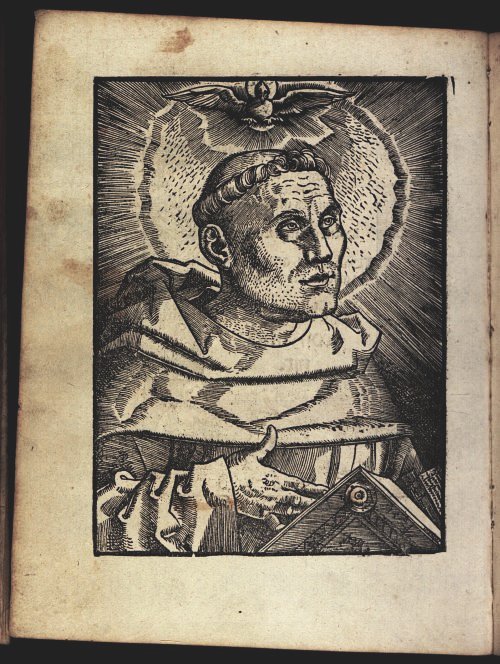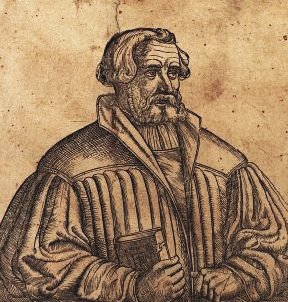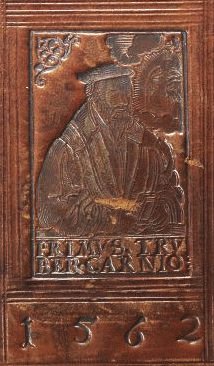Portraits of reformers
Single-leaf and book printing were used to disseminate reformatory contents. With their diverse possibilities, the printing techniques also met the need for pictorial representations of the reformers. Lucas Cranach's portraits of Luther were carved into wood by many artists and printed together with his papers. On the other hand, portrait plates for embossing book covers as in the case of the Slovenian reformer Primož Trubar are rare.
Martin Luther's portrait by Hans Baldung Grien (MUE AD 104:3a) was designed after an example by Lucas Cranach. With a nimbus and the Holy Ghost in the form of a dove above his head Baldung pictured the reformer as a saint – according to reformatory thinking a contradiction. Johann Schott a printer from Strasbourg used the woodcarving multiple times for papers by and about Luther.
Theologian and solicitor Andreas Bodenstein called Karlstadt had promulgated Martin Luther at the University of Wittenberg in 1512 and was initially his enthusiastic follower. Because of his radicality, however, a discord arose with Lutheranism. Karlstadt finally found refuge and reputation in Switzerland. In the memorial to his death at the end of 1541 (MUE Hospinian 7: 2) Heinrich Pantaleon praised him as "the Swiss glory, honor and ornament".
Due to his reformed belief the Slovenian theologian Primož Trubar had to flee to southern Germany where he became a protestant pastor.Luther's New Testament was translated into Slovene at his instigation and printed both in Glagolitic (MUE Gross B 186) and in Cyrillic script. Trubar's portrait adornes the book cover in front. The two translators Stephan Consul Istranin und Anton Dalmata are portrayed on the back. Portrait plates for embossing leather book bindings are rather rare.



